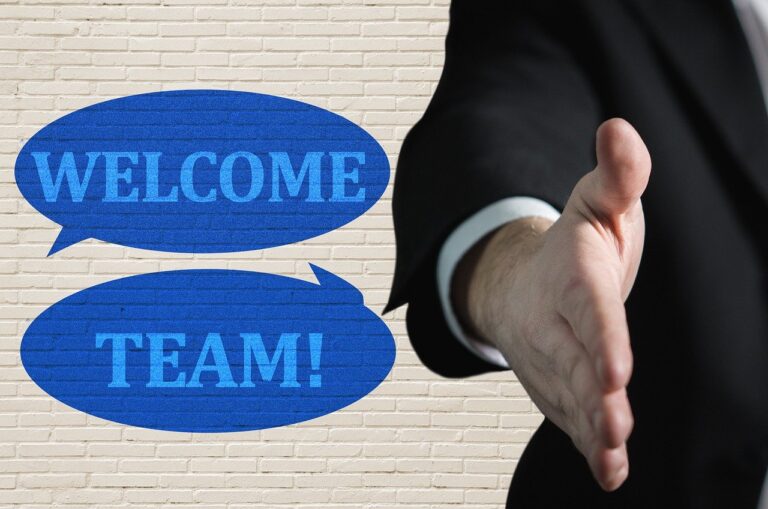The process of new employee onboarding can often be misunderstood. When thinking about employee onboarding, many people’s minds go to human resources orientation, setting up company accounts, and receiving technology equipment and access badges – just the administrative pieces of onboarding, and things that usually don’t take more than a couple of hours. But how long does a complete and effective employee onboarding experience – one that prepares a new employee to become fully productive – take? Estimates from different studies vary widely, from six months to eight months to a year to as long as two years.
For employee onboarding to be truly effective, it should go beyond simply acquainting new employees with the organization and the day-to-day tasks of their role; it should include steps to help new employees get to know, understand, and trust their team members. This will integrate them more fully into their team and make them fully contributing, productive teammates more quickly.
One of our clients faced the challenge of onboarding 160 new employees at once and recognized the value of providing administrative orientation and true integration in their employee onboarding process. They wanted an employee onboarding experience that would enable these new employees to feel connected to each other and to the organization.
What is Employee Onboarding?
Employee onboarding is an organization’s process for helping new hires transition smoothly into their roles. In general, onboarding involves equipping new employees with the necessary knowledge and skills to execute their roles and become effective and integrated team members.
The onboarding process typically includes several key elements:
-
Orientation
This is the element most often thought of when talking about employee onboarding. Orientation typically includes an overview introduction to the company’s culture, values, and mission, and usually involves meetings with various departments, a tour of the facilities, and presentations on company policies.
-
Training
Learning specific job-related duties and responsibilities is, of course, an integral part of the employee onboarding process. Whether this involves technical skills training, systems orientation, or company procedures, this part of onboarding equips new employees with the tools they need to execute their roles.
-
Integration
Encouraging and providing structured opportunities for new employees to interact and network with their new colleagues fosters essential relationships and connections and helps build a sense of belonging.
The importance of employee onboarding cannot be overstated – nor should it be skipped or short-changed. A well-executed onboarding process impacts employee engagement, retention, and overall productivity. By providing new employees with the tools and information they need from the start, onboarding helps them become productive more quickly. It also helps new hires feel welcomed and valued, reducing turnover and increasing employee satisfaction. Emphasizing solid relationships with the people they will work with most closely enables new employees to communicate more effectively with their team, avoid missteps and misunderstandings in their day-to-day processes, and understand individual contributors’ strengths and unique knowledge.
Overall, an effective employee onboarding experience is essential for maximizing the success and satisfaction of new employees and ultimately contributing to the organization’s overall success.
Incorporating Team Building into Employee Onboarding Programs
We’ve established that integrating new employees into the company and team is vital to an effective onboarding program. Team building is a great way to accomplish that.
Team building is not just the ‘fun stuff’; it lays the foundation for building trust among team members, fosters personal connections through direct interactions, improves team dynamics by creating an understanding and appreciation for team member approaches, strengths, and communication styles, and creates a shared experience with a lasting emotional impact. These elements all contribute to new employees becoming more productive faster.
So, when our aerospace company client with 160 new hires reached out to us to design a full day of team building as part of their employee onboarding process, it was a significant step toward ensuring a successful onboarding experience for their new employees.
How a Major Aerospace Company Onboarded Employees with “The Great Egg Drop”
We designed a day filled with adventure and learning aimed at accomplishing our client’s goals, including:
- An understanding and application of the keys to successful teams
- A realization that behavioral change may be necessary to succeed
- A firm sense of possibilities and motivation to seek them out
- A better commitment to change management in the future
The day started with an activity called “The Great Egg Drop.” The large group was formed into small sub-teams, which were given specific materials and asked to research and build a device (with the “winning team landing a lucrative contract”) that would protect three eggs when dropped from a height.
This simple-sounding activity involved participants needing to ask the right questions from their “clients” (the facilitator) to build the device to the customer’s specifications. Asking specific questions could lead to great insights and potential creativity. Ignoring the customer or asking very narrowly focused questions usually led to building a device that fell short of customer expectations and, ultimately, failed to land the contract.
The exercise mirrored real-world scenarios that the new hires would encounter on the job, emphasizing how understanding and meeting client needs are crucial. These are essential skills for new employees to internalize to adapt to organizational culture and expectations, thus supporting successful onboarding and behavioral change.
Strengthening Team Bonds with “The Mohawk Walk”
Next, we moved on to “The Mohawk Walk.” In this activity, several cables were strung between trees a foot or so above the ground, and various ropes were hanging from the trees, creating an engaging low-ropes course. The course was designed with additional points-earning opportunities, offering further challenges for participants to tackle together.
The goal of the activity was to work in teams to move participants across the wires between sections while attempting to accumulate as many points as possible. The team’s results were then combined to achieve the specified points benchmark for the overall group. To ensure full participation, we provided individuals with multiple options (some supervisory or scoring and non-physical) based on their comfort level, and all participants were instructed on proper safety guidelines.
As the activity unfolded, groups experienced the benefits of collaborating, helping each other out, and setting other teams up for success by sharing best practices. By strategizing together and playing to individual contributors’ strengths, the teams could navigate the course as effectively as possible. This activity demands communication, coordination, and mutual support to overcome the physical and strategic challenges of the low ropes course, and in doing so, to boost team morale and motivation.
The skills highlighted by this activity – like problem-solving and trust-building – are directly transferable to workplace dynamics.
Enhancing Team Dynamics through High-Energy Onboarding Activities
Finally, groups engaged in a high ropes element called The Flying Squirrel. In this fun, high-energy activity, participants were strapped into a state-of-the-art full-body harness system and pulled up to 40 feet in the air by the rest of their team working in unison after having undergone a safety briefing by trained staff. This event also had numerous critical roles, some non-physical, to allow for full and active participation by all. Teams needed to communicate effectively to coordinate a safe and successful lift.
This activity strengthens interpersonal relations through a shared challenge. Creating a shared experience is a foundational element of team building; it increases engagement by encouraging communication, collaboration, and problem-solving in an activity the participants have never done before. Lifting a team member high into the air clearly emphasizes the need for trust and teamwork, both for the participant being lifted and the team responsible for raising them.
Successfully completing a high-stakes activity like this as a team builds a foundation of mutual trust and encourages ongoing cooperation. Enhancing team dynamics in this way is beneficial for integrating new employees into the company culture and fostering a collaborative work environment.
Long-Term Onboarding Success through Integrated Team Building
While the new hires may not remember the HR presentation on their company policies, they are sure to remember the details of this team building day because of its emotional impact. That impact makes the lessons learned through the activities both powerful and long-lasting.
In these three activities, group members had the opportunity to not only work together as a team and challenge their personal limits, but also learn the benefit of client and team relationships, the need for ongoing communications, and how to look for win-win possibilities. For our client, this meant a promising outlook for their new hires, including improved team cohesion and better commitment to change management.
Based on the success of this experience, our aerospace client adopted the program as an annual event and orientation for all new hires, which is an excellent indicator of its success and value to the company.
Best Practices to Improve the Employee Onboarding Experience
For companies that want to implement similar employee onboarding strategies, the best place to start is by looking for a way to incorporate team building into their onboarding process. That doesn’t necessarily mean utilizing the same exact program as this aerospace company; there are many styles of team building programs that will accomplish similar goals when tailored to the unique needs of the company and onboarding circumstances and – most importantly – facilitated by a team building expert who will guide the activity to achieve successful onboarding outcomes.
A few types of team building programs ideally suited for employee onboarding experiences include charitable CSR programs, corporate scavenger hunts (SmartHunts®), and professional development workshops. All of these program styles help establish trust, build personal connections, understand varied communication styles, and create a shared experience.
Elevate Your Employee Onboarding with Expert-Led Team Building
Whether you want to elevate new hires – literally – into the treetops, or raise the impact and value of the onboarding process for both new employees and your organization, Best Corporate Events is ready to plan and execute an impactful team building experience for your onboarding events. Contact BEST today – our professional team will make creating a memorable employee onboarding experience easy and successful for your team.


